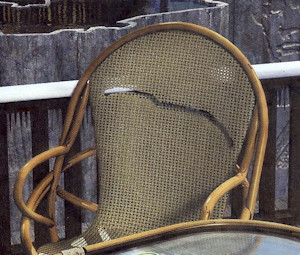The Great Global Treasure Hunt on Google Earth

The Great Global Treasure Hunt
For a treasure hunt book with such a long title, the publisher provided a surprisingly short time to solve it. The Great Global Treasure Hunt on Google Earth by Tim Dedopulos was published in September 2011 and the competition to win €50,000 closed in March 2012.
There were nevertheless 77 correct entries received with the winner chosen at random.
After that, the publisher quickly lost interest. A series of videos were recorded by the author revealing clues to the solution on each page of the book, but only the first six were posted to YouTube. Perhaps the escalating obscurity of the solutions started to grate because, I’m sorry to say, this is a treasure hunt that infuriates rather than intrigues. Where did such a great idea go wrong?
It does sound like a great idea: update the 1970s craze to take advantage of the Internet and the amazing source of knowledge and inspiration that it is. Perhaps the error in execution arose because, despite Google’s best efforts, it is far too easy to drown in a sea of information. It is possible for a puzzle-setter to walk a path to their intended destination, fishing out disparate clues along the way, but to expect anyone else to retrace their steps is optimistic at best.
I think the author may have recognised the flaw in their puzzle once it was finished. The introductory instructions for solving the puzzle are almost longer than the book itself. A dedicated website and personal hints from the author via Twitter were also available to guide people along the right path. How much these contributed to the 77 correct solutions, I cannot say.
The book itself contains 14 pictures, most with a page of accompanying text. There is no story to speak of, each page instead being full of cryptic and pseudo-philosophical musings.
The artwork is a blend of photographic and computer-generated elements and is intriguing rather than beautiful. It plays nicely with perspective and creates impossible shapes and hidden objects in a few different ways. And it wears its debt to the works of Escher on its sleeve, with an endless waterfall made of lava being the most blatant lift.
There are also nods to Masquerade with a rabbit as well as a Google Earth icon hidden on every page for the eagle-eyed to spot. Even the artist’s “signature” becomes a recurring hidden object.
Solving the puzzle involves identifying a specific location hinted at by each picture. Many of these are vague pictorial associations to get you to the right general area. For example, a huge pile of salt relates to Bologna because salt is an ingredient in bolognese sauce. (Yes, really). To fix the precise location, lines and patterns incorporated into each picture represent networks of road or rivers, or outlines of cities or countries, that can be found on Google Earth.

Find this road on Google Earth!
Herein lies one major problem: a not quite straight piece of road in one county can look pretty much the same as a not quite straight river in another. Searching for a single road on a map based on its shape is as much fun as looking for a needle in a haystack, with the added bonus of not being certain the haystack you’re looking at is on the right side of the world. It quickly becomes tiresome rather than entertaining.
Another annoyance is that the final solution, should you find it, isn’t even viewable on Google Earth. The location you’re guided to is a stained glass window in the San Giovanni in Monte church, Bologna. It’s a window created by the not-very-famous Francesco del Cossa, a 15th century artist better known for his frescoes. A view from Google Earth of the front of this church is at the bottom of this post. The detail of the window is completely invisible.
My final nail in the coffin of this book? To get to the solution involves numerous mighty leaps of logic including the following sequence of steps:
- Working out that one of the pictures represents Annonay in France.
- Realising that Annonay, France and Ferrara, Italy both have large hot air balloon festivals.
- Concluding that you’re looking for a work of art created by a Renaissance painter of the School of Ferrara.
Simples.
One word review? “Avoid”. I’m not even going to provide a link to Amazon for you to see for yourself.

San Giovanni in Monte, Bologna, Italy